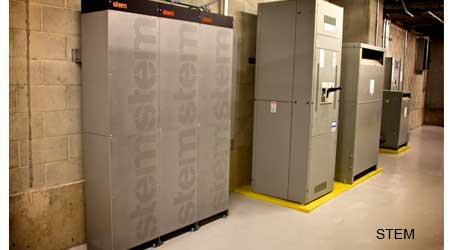Pairing Solar Power with Energy Storage
Last part of a 3-part article describing battery-storage technologies, how and why they’re used, and the solar option
Another application for energy storage is for use with onsite renewable generation, currently driven by photovoltaic installations. PV installations by themselves address overall energy charges at a facility, but they can’t necessarily address peak demand. By pairing solar with storage, you get a holistic solution, says Bob Rudd, director of energy project development, energy storage, Solar City. Rudd adds that in facilities where the PV system is large enough to be able to charge the batteries at least to 75 percent, there are federal tax credits available, because at that point the two systems are considered to be operating as a single asset.
To be clear, in a typical PV plus storage system, the battery storage is still likely being charged by the grid at off-peak rates and being deployed to shave peaks in demand, while the PV system is helping to supply the base load. The possibilities for system configuration are limited by local utility tariff structures and regulations, engineering prowess, and available capital at a facility.
Improving Resilience
Energy storage starts speaking as well to resilience. According to research from Eaton, the average duration of a power outage in 2014 in the U.S. was 43 minutes. Bob Magyar, product marketing manager for VARTA Storage, says facility managers should consider whether it makes economic sense to fire up a diesel generator for that duration. “Would it make more sense to install a (storage) system that can handle the load for 30 minutes, 60 minutes, or two hours? If we get beyond that, then we’ll switch over to the generators,” Magyar says. Different systems and chemistries could provide a range of backup capacity. However, a battery without a fuel resource is an inherently shaky backup power solution, says Rudd.
It is still early days for energy storage in commercial facilities, and in the future facility managers should expect to see aspects like enhanced demand response and monetized grid services become available as options. With the systems and structures available today, for facility managers in areas of the country with high demand charges and narrow peaks in energy use, or those in areas where the local utility is incentivizing grid resilience, it is a good time to have your facility evaluated for energy storage system suitability. Just do your homework. A lot of new players are coming into the market, so pick a company that will be able to support the system for the decade to come.
Related Topics:














